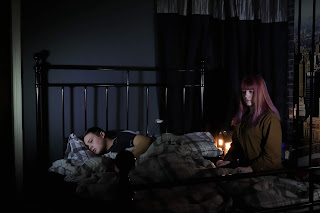When reviewing the Assessment for Film Studies, I decided to opt for the option of creating a short film, applying one of the theories we have studied for the unit. I decided to focus upon Lacan's mirror stage theory, as I feel it will be easier to articulate into film with the resources I currently possess. I feel that I have a clear understanding of knowledge upon the Mirror Stage theory, and therefore I feel that it would be easier to articulate through cinema, especially if I relate a storyline to personal experiences.
I've decided after a stimuli (which will be discussed below) that i would like to focus upon the idea of mental illness', specifically depression and other emotionally distraught diagnosis'. I feel this would articulate the mirror stage particularly well, due to the way depression can make someone feel; "experience depressed mood, loss of interest or pleasure, feelings of guilt or low self-worth, disturbed sleep or appetite, low energy, and poor concentration." (Mental Health Foundation, 2019). As someone who has dealt with Depression and other mental illness', I believe I can articulate this into cinema with the sense of realism.
 |
| @will.barlowmediaproduction (2018), "The Aftermath" INSTAGRAM |
Incorporating this into video will be difficult, due to the shutter speed issue and different techniques I will have to experiment with, however, if I keep the lighting the same, and experiment with either slow motion or the 'smudge-motion' technique, it may be proven successful. I can apply the image above as a base stimuli due to the similarities it withholds with the symptoms of depression.
In separate posts, I will write up a script using the appropriate cinema format, location research and an equipment list.
Bibliography:
Mental Health Foundation, Accessed 5th January 2019, [online] "Depression | Mental Health Foundation" https://www.mentalhealth.org.uk/a-to-z/d/depression
Will Barlow, 25th April 2018, [online], "The Aftermath: Part 2" - https://www.instagram.com/p/BiAfs4thXF6/

No comments:
Post a Comment